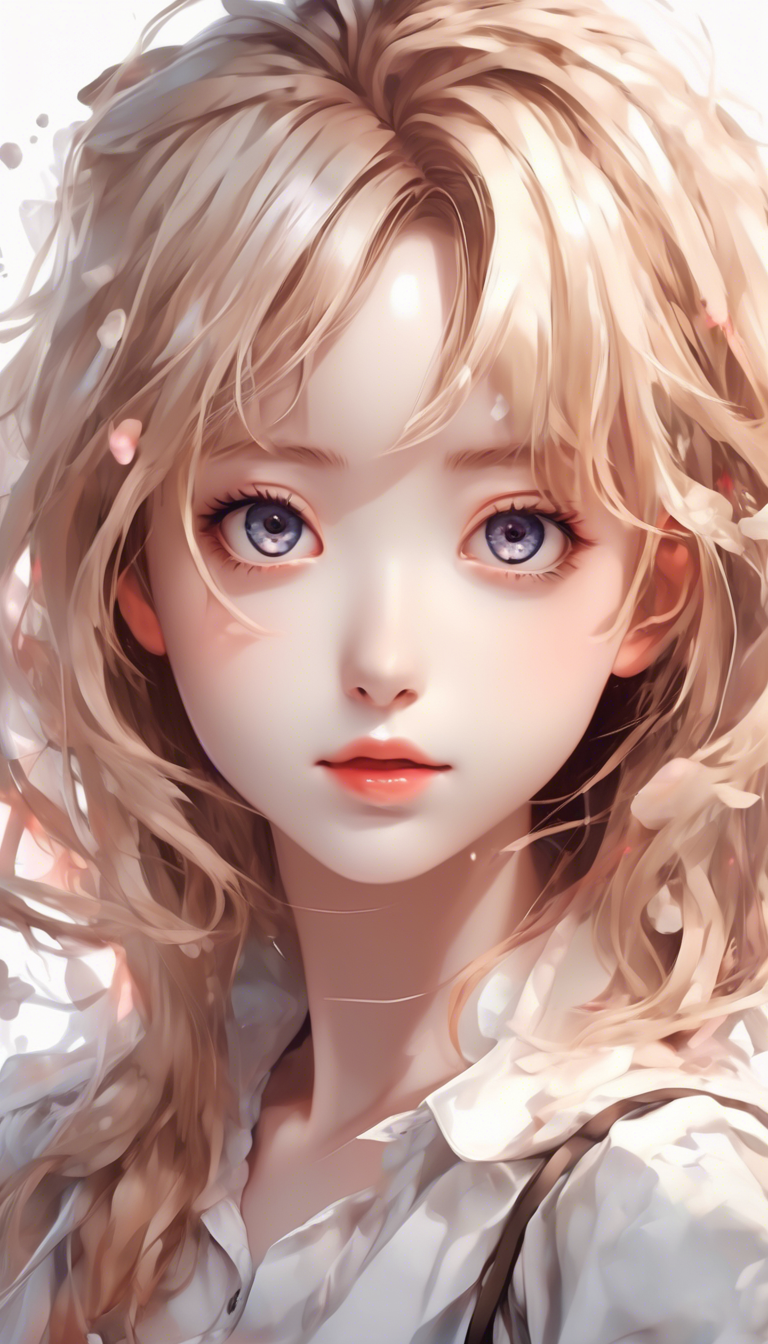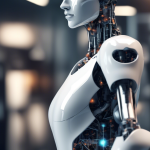The Impact of AI Art on the Evolution of Anime Aesthetics
In recent years, AI art has emerged as a revolutionary force within the creative realm, specifically transforming the beauty and diversity of anime aesthetics. This intersection of technology and art is creating exciting opportunities for both artists and fans alike. Exploring the impact of AI art on anime reveals how it is reshaping the genre, offering fresh visual styles, and redefining what creativity means today.
The use of artificial intelligence in art enables the generation of unique images that would traditionally require extensive skill and time. Tools like DeepArt and GANs (Generative Adversarial Networks) allow creators to meld styles, colors, and themes effortlessly. With these modern techniques, the anime landscape is expanding, allowing for:
- Diverse Styles: AI can analyze countless images and extrapolate styles that might be entirely new or a combination of existing ones.
- Speed and Efficiency: Artists can generate multiple iterations of designs quickly, reducing time spent on background creation and character designs.
- Accessibility: With user-friendly interfaces, even those without formal training can create visually rich anime-style art.
One of the most captivating aspects of AI art in anime is its ability to invoke emotional responses by fine-tuning visuals. The technology helps to create depth and detail within illustrations, enhancing the storytelling element inherent in anime. Here’s how it impacts narrative and emotional resonance:
- Emotive Colors: AI tools can suggest color palettes that are more effective in conveying emotions and moods within scenes.
- Character Expression: Generating lifelike expressions helps audiences relate to characters on a more personal level.
- Dynamic Backgrounds: Artists can quickly iterate on backgrounds, enriching the world-building aspect of anime.
These advancements spark new collaborations between traditional artists and technology, pushing boundaries in anime production. With AI art becoming more mainstream, many studios and creators are embracing it as a tool rather than viewing it as a replacement for human creativity. This collaboration has real-world implications, particularly in the anime industry where production costs and deadlines can be challenging.
Importantly, AI art pushes traditional anime aesthetics into uncharted territory. No longer is the medium limited to specific character models or animation techniques. Instead, creators are experimenting with new forms such as:
- Abstract Adaptations: By using AI, artists can turn ordinary scenes into surreal environments while retaining a recognizable anime structure.
- Hybrid Styles: The mixture of Western and Eastern art styles can lead to new character designs that blend cultural elements.
- Fan Innovations: Fans are using AI to create their versions of beloved characters, further customizing the anime experience.
However, as this technology flourishes, it raises questions about originality and ownership in digital art. As AI can mimic and combine existing styles, discussions about what constitutes “original” art become necessary. While AI can help create, the artist’s unique vision and hand are still crucial. Maintaining a balance between technology and the creative spirit ensures that the heart of anime remains intact.
Looking forward, the prospect of AI influencing anime aesthetics opens up exciting possibilities. We may see:
- More Interactive Content: AI could facilitate real-time adjustments to anime scenes based on viewer feedback.
- Collaborative Projects: New platforms might emerge, allowing artists and AI to co-create in ways we haven’t yet imagined.
- Expanded Genres: AI could inspire entirely new genres within the anime landscape by combining disparate elements.
As you delve deeper into the world of AI art in anime, the key takeaway is the transformative power of technological advancements. These innovations invite both seasoned artists and newcomers to explore previously unexplored creative avenues. Artists are now equipped with tools that expand their toolkit, enabling them to tell more intricate stories and develop richer visuals.
The evolution of anime aesthetics continues to evolve, marrying traditional artistry with futuristic technology. Embracing this blend can lead to an even greater appreciation for the labor and creativity involved in the art form. As this synergy between AI and anime grows, the results promise to be as dynamic and exciting as the stories told within the anime themselves.
Exploring the Ethical Considerations of AI-Generated Anime Art
The rise of ai art anime has sparked a fascinating discussion about the ethical considerations surrounding the creation and usage of AI-generated art. These digital pieces often replicate the vibrant styles typical of traditional anime while bringing forth a new creation process that has both advantages and concerns.
First, let’s consider what AI art truly is. With technological advancements in machine learning and neural networks, artists and creators can now use AI tools to generate unique anime-style artworks. This innovation makes art accessible to a broader audience. You might use these AI applications to create a character, design a scene, or even generate an entire visual story. However, while the tools are groundbreaking, ethical concerns arise, especially regarding authorship and originality.
One major ethical issue is the question of ownership. Who owns the rights to an AI-generated artwork? Is it the programmer who created the algorithm, the user who entered the parameters, or the AI itself? Currently, most laws do not account for creative outputs generated by AI, leading to a legal gray area. This ambiguity can create conflicts, especially if an AI-generated piece closely resembles the work of a human artist. You might ponder, “What if I generate a piece that looks like an existing anime style—is that plagiarism?”
Another concern lies in the representational integrity of characters and stories. The traditional anime culture often embodies specific cultural nuances and storytelling techniques. Using AI art anime, creators can easily overlook these elements, leading to portrayals that lack depth or authenticity. This situation can dilute the cultural richness that fans appreciate in anime, making it critical for users to understand and respect the original contexts.
Additionally, AI-generated art raises questions about labor. Many talented artists rely on their skills to earn a living. With the availability of AI tools, there is a risk that the market may become oversaturated with AI-generated content. This decline in demand for human-created art could severely impact livelihoods. Thus, balancing innovation and artistic expression with respect for human creators is crucial in this evolving landscape.
Moreover, you should consider how AI can perpetuate biases. Since AI learns from existing datasets, it may inadvertently replicate the styles and stereotypes present in the training data. For instance, if an AI is trained primarily on a particular genre of anime, its outputs may fail to represent diverse voices and experiences. Being aware and proactive about how biases in the training data can affect the artworks is essential for ethical usage.
In light of these challenges, here are some steps you can take if you choose to engage with AI art anime:
- Understand the tools: Familiarize yourself with how AI art generators work to grasp their implications fully.
- Respect creator rights: When using or sharing AI-generated artwork, make sure to credit original sources and avoid replicating existing works too closely.
- Be culturally aware: When creating characters or narratives, ensure you are sensitive to cultural contexts and avoid stereotypes.
- Support human artists: Consider empowering human creators by purchasing their art or commissioning custom pieces alongside using AI tools.
- Advocate for ethical guidelines: Engage in discussions about ethical practices in AI art and advocate for clearer guidelines to protect artists’ rights.
Ethics in the realm of AI art anime is still being defined, and your involvement can shape the future of this technology. Staying informed and responsible in your practices creates a more inclusive environment that appreciates both human talent and technological advancements. Ultimately, the combination of AI and art has the potential to enrich the anime community, but the responsibilities connected to this innovation must be recognized and addressed.
Exploring the ethical implications of AI-generated anime art opens up critical conversations that can steer the future of creative expression. The journey ahead involves a delicate balance between leveraging technology and respecting the roots of art, culture, and community. As you delve into this world, remember that engaging with both the technology and its ethical landscape can lead to a more responsible and enriching experience for everyone involved.
Conclusion
As we look at the impact of AI art on the evolution of anime aesthetics, it’s clear that artificial intelligence is reshaping the artistic landscape in ways we never thought possible. AI tools enhance creativity, allowing artists to push boundaries and experiment with styles, blending traditional techniques with cutting-edge technology. This dynamic interplay is resulting in a unique fusion that resonates with both long-time anime fans and new audiences alike. The visual richness brought forth by AI-generated art not only captivates viewers but also sets the stage for innovative storytelling in anime.
However, alongside these exciting developments, there are important ethical considerations to bear in mind. As creators embrace AI-generated art, questions arise about ownership, authenticity, and the implications of having art produced by algorithms. Artists may worry about their work being devalued or misrepresented, while fans might grapple with the idea of what constitutes true artistry. Striking a balance between leveraging AI’s benefits and respecting the human elements of creativity will be crucial as this field evolves.
The ongoing dialogue surrounding AI art in the anime community serves as a reminder that technology and tradition can coexist. By addressing ethical concerns while embracing innovative approaches, we set the stage for a new era in anime. This future holds the promise of broadening artistic avenues, enriching narratives, and enhancing the viewer’s experience, paving the way for a vibrant evolution in anime culture. Engaging in this conversation ensures that as we explore the potentials of AI art, we honor the human spirit that lies at the heart of anime creation.


